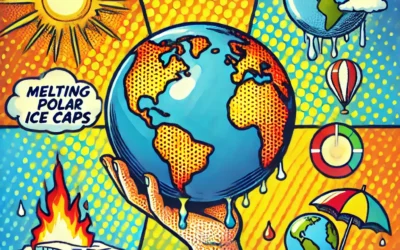Forest Resources: The Green Lungs of the Planet
Forest resources are the biotic and abiotic elements that make up the forest ecosystems, and provide various goods and services to human societies and the environment. Forests cover about 31% of the global land area, and store more than half of the terrestrial carbon.
According to the OECD Forest Resources Indicator, the forest area in the OECD countries increased by 3.2% from 1990 to 2020, while the forest carbon stock increased by 8.7%. In this article, we will explore the types, functions, threats, and management of forest resources.
Types of Forest
Forest resources can be classified into two main types: timber and non-timber. Timber resources are the wood and wood products that are obtained from the trees and other woody plants in the forest. Timber resources can be used for various purposes, such as construction, furniture, paper, fuel, and chemicals.
Non-timber resources are the other products and services that are derived from the forest, such as food, medicine, fodder, fiber, resin, latex, honey, mushrooms, nuts, seeds, fruits, flowers, spices, herbs, wildlife, recreation, tourism, education, research, culture, and spirituality.
Functions of Forest Resources
Forest resources have multiple functions for the environment and the society. Some of the main functions are:
Environmental functions: Forest resources play a vital role in regulating the climate, water, soil, air, and biodiversity. Forests sequester and store carbon, and reduce greenhouse gas emissions. Forests regulate the water cycle, and provide water supply, quality, and purification. Forests prevent soil erosion, and enhance soil fertility and productivity. Forests filter and clean the air, and reduce air pollution and noise. Forests conserve and protect the biodiversity, and provide habitat and food for many species.
Economic functions: Forest resources contribute to the economic development and well-being of the society. Forests provide income, employment, and livelihoods for many people, especially the rural and indigenous communities. Forests generate revenue for the government, and support the public spending and services. Forests create and sustain the markets and industries for the forest products and services. Forests stimulate and enhance the innovation and competitiveness in the green sectors.
Social functions: Forest resources improve the social welfare and justice of the society. Forests provide food security, nutrition, and health for many people, especially the poor and vulnerable groups. Forests offer recreation, leisure, and education opportunities for the public, and improve the mental and physical well-being. Forests preserve and promote the culture, heritage, and spirituality of the society, and foster the sense of identity and belonging.
Threats to Forest Resources
Forest resources face many threats and challenges from the human and natural factors. Some of the main threats are:
Deforestation and degradation: Deforestation is the conversion of forest land to other land uses, such as agriculture, urbanization, mining, and infrastructure. Degradation is the reduction of the quality and quantity of the forest resources, such as biomass, biodiversity, and carbon. According to the Global Forest Resource Assessment 2020, the world lost 178 million hectares of forest area from 1990 to 2020, equivalent to the size of Libya. The main drivers of deforestation and degradation are the expansion of agricultural land, the extraction of wood and fuel, the development of roads and settlements, the occurrence of fires, pests, and diseases, and the impacts of climate change.
Overexploitation and overconsumption: Overexploitation is the excessive and unsustainable use of the forest resources, such as timber, wildlife, and non-timber products. Overconsumption is the excessive and wasteful demand and consumption of the forest products and services, especially by the developed and urbanized societies. Overexploitation and overconsumption can lead to the depletion and exhaustion of the forest resources, and reduce their availability and accessibility for the present and future generations. They can also cause the loss of the genetic and biological diversity, and the degradation of the ecosystem functions and services.
Governance and policy: Governance and policy are the institutional and legal frameworks and processes that regulate and manage the forest resources. Governance and policy can be a threat or a challenge to the forest resources, depending on their quality, effectiveness, and efficiency. Poor governance and policy can result from the lack of information, knowledge, and capacity, the absence of participation, consultation, and cooperation, the presence of corruption, conflict, and violence, and the influence of vested interests, pressures, and incentives. Poor governance and policy can undermine the protection and conservation of the forest resources, and compromise their sustainable and equitable use and distribution.
Management of Forest Resources
Forest resources require proper and prudent management to ensure their conservation and sustainability. Some of the main management practices are:
Monitoring and assessment: Monitoring and assessment are the systematic and continuous collection and analysis of the data and information on the forest, such as their extent, condition, use, and value. Monitoring and assessment can help to measure, evaluate, and report the status and trends of the forest, and to identify and address the gaps, issues, and challenges. Monitoring and assessment can also support the decision-making and policy-making processes, and enhance the transparency and accountability of the forest management.
Restoration and rehabilitation: Restoration and rehabilitation are the actions and interventions that aim to restore and improve the forest that have been degraded, damaged, or destroyed by the human or natural factors. Restoration and rehabilitation can involve the restoration of the forest cover, structure, and function, the enhancement of the forest productivity and diversity, the recovery of the forest ecosystem services and benefits, and the re-establishment of the forest connectivity and resilience. Restoration and rehabilitation can also involve the participation and empowerment of the local and indigenous communities, and the integration of the traditional and scientific knowledge and practices.
Conservation and protection: Conservation and protection are the strategies and measures that aim to conserve and protect the forest from the threats and challenges that they face. Conservation and protection can involve the establishment and management of the protected areas, such as national parks, wildlife reserves, and biosphere reserves, the implementation and enforcement of the laws and regulations, such as the forest laws, the wildlife laws, and the environmental laws, the promotion and adoption of the best practices and standards, such as the sustainable forest management, the certification schemes, and the codes of conduct, and the development and implementation of the policies and plans, such as the national forest policies, the national biodiversity strategies, and the national action plans.
Conclusion
Forest resources are the biotic and abiotic elements that make up the forest ecosystems, and provide various goods and services to human societies and the environment. Forest have multiple functions for the environment, the economy, and the society, such as regulating the climate, generating revenue, and improving welfare and justice.
Forest also face many threats and challenges from the human and natural factors, such as deforestation and degradation, overexploitation and overconsumption, and governance and policy.
Forest require proper and prudent management to ensure their conservation and sustainability, such as monitoring and assessment, restoration and rehabilitation, and conservation and protection. Forest resources are the green lungs of the planet, and can contribute to the goals and targets of climate policy and sustainable development.






